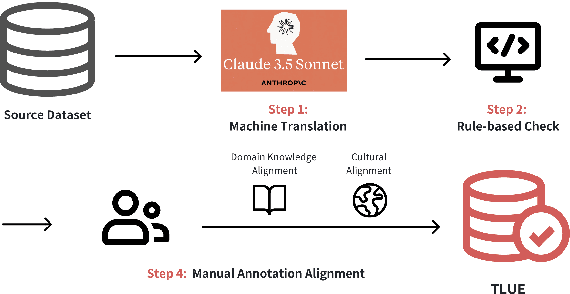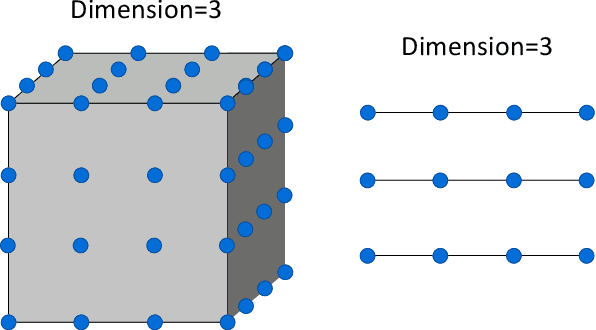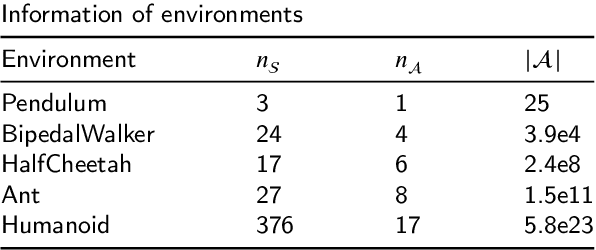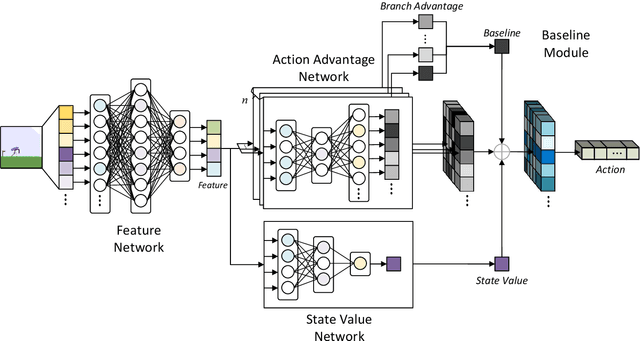Cheng Huang
Tibetan Language and AI: A Comprehensive Survey of Resources, Methods and Challenges
Oct 22, 2025Abstract:Tibetan, one of the major low-resource languages in Asia, presents unique linguistic and sociocultural characteristics that pose both challenges and opportunities for AI research. Despite increasing interest in developing AI systems for underrepresented languages, Tibetan has received limited attention due to a lack of accessible data resources, standardized benchmarks, and dedicated tools. This paper provides a comprehensive survey of the current state of Tibetan AI in the AI domain, covering textual and speech data resources, NLP tasks, machine translation, speech recognition, and recent developments in LLMs. We systematically categorize existing datasets and tools, evaluate methods used across different tasks, and compare performance where possible. We also identify persistent bottlenecks such as data sparsity, orthographic variation, and the lack of unified evaluation metrics. Additionally, we discuss the potential of cross-lingual transfer, multi-modal learning, and community-driven resource creation. This survey aims to serve as a foundational reference for future work on Tibetan AI research and encourages collaborative efforts to build an inclusive and sustainable AI ecosystem for low-resource languages.
EBS-CFL: Efficient and Byzantine-robust Secure Clustered Federated Learning
Jun 16, 2025Abstract:Despite federated learning (FL)'s potential in collaborative learning, its performance has deteriorated due to the data heterogeneity of distributed users. Recently, clustered federated learning (CFL) has emerged to address this challenge by partitioning users into clusters according to their similarity. However, CFL faces difficulties in training when users are unwilling to share their cluster identities due to privacy concerns. To address these issues, we present an innovative Efficient and Robust Secure Aggregation scheme for CFL, dubbed EBS-CFL. The proposed EBS-CFL supports effectively training CFL while maintaining users' cluster identity confidentially. Moreover, it detects potential poisonous attacks without compromising individual client gradients by discarding negatively correlated gradients and aggregating positively correlated ones using a weighted approach. The server also authenticates correct gradient encoding by clients. EBS-CFL has high efficiency with client-side overhead O(ml + m^2) for communication and O(m^2l) for computation, where m is the number of cluster identities, and l is the gradient size. When m = 1, EBS-CFL's computational efficiency of client is at least O(log n) times better than comparison schemes, where n is the number of clients.In addition, we validate the scheme through extensive experiments. Finally, we theoretically prove the scheme's security.
* Accepted by AAAI 25
FuXi-Air: Urban Air Quality Forecasting Based on Emission-Meteorology-Pollutant multimodal Machine Learning
Jun 09, 2025Abstract:Air pollution has emerged as a major public health challenge in megacities. Numerical simulations and single-site machine learning approaches have been widely applied in air quality forecasting tasks. However, these methods face multiple limitations, including high computational costs, low operational efficiency, and limited integration with observational data. With the rapid advancement of artificial intelligence, there is an urgent need to develop a low-cost, efficient air quality forecasting model for smart urban management. An air quality forecasting model, named FuXi-Air, has been constructed in this study based on multimodal data fusion to support high-precision air quality forecasting and operated in typical megacities. The model integrates meteorological forecasts, emission inventories, and pollutant monitoring data under the guidance of air pollution mechanism. By combining an autoregressive prediction framework with a frame interpolation strategy, the model successfully completes 72-hour forecasts for six major air pollutants at an hourly resolution across multiple monitoring sites within 25-30 seconds. In terms of both computational efficiency and forecasting accuracy, it outperforms the mainstream numerical air quality models in operational forecasting work. Ablation experiments concerning key influencing factors show that although meteorological data contribute more to model accuracy than emission inventories do, the integration of multimodal data significantly improves forecasting precision and ensures that reliable predictions are obtained under differing pollution mechanisms across megacities. This study provides both a technical reference and a practical example for applying multimodal data-driven models to air quality forecasting and offers new insights into building hybrid forecasting systems to support air pollution risk warning in smart city management.
BadSR: Stealthy Label Backdoor Attacks on Image Super-Resolution
May 21, 2025Abstract:With the widespread application of super-resolution (SR) in various fields, researchers have begun to investigate its security. Previous studies have demonstrated that SR models can also be subjected to backdoor attacks through data poisoning, affecting downstream tasks. A backdoor SR model generates an attacker-predefined target image when given a triggered image while producing a normal high-resolution (HR) output for clean images. However, prior backdoor attacks on SR models have primarily focused on the stealthiness of poisoned low-resolution (LR) images while ignoring the stealthiness of poisoned HR images, making it easy for users to detect anomalous data. To address this problem, we propose BadSR, which improves the stealthiness of poisoned HR images. The key idea of BadSR is to approximate the clean HR image and the pre-defined target image in the feature space while ensuring that modifications to the clean HR image remain within a constrained range. The poisoned HR images generated by BadSR can be integrated with existing triggers. To further improve the effectiveness of BadSR, we design an adversarially optimized trigger and a backdoor gradient-driven poisoned sample selection method based on a genetic algorithm. The experimental results show that BadSR achieves a high attack success rate in various models and data sets, significantly affecting downstream tasks.
FMSD-TTS: Few-shot Multi-Speaker Multi-Dialect Text-to-Speech Synthesis for Ü-Tsang, Amdo and Kham Speech Dataset Generation
May 20, 2025



Abstract:Tibetan is a low-resource language with minimal parallel speech corpora spanning its three major dialects-\"U-Tsang, Amdo, and Kham-limiting progress in speech modeling. To address this issue, we propose FMSD-TTS, a few-shot, multi-speaker, multi-dialect text-to-speech framework that synthesizes parallel dialectal speech from limited reference audio and explicit dialect labels. Our method features a novel speaker-dialect fusion module and a Dialect-Specialized Dynamic Routing Network (DSDR-Net) to capture fine-grained acoustic and linguistic variations across dialects while preserving speaker identity. Extensive objective and subjective evaluations demonstrate that FMSD-TTS significantly outperforms baselines in both dialectal expressiveness and speaker similarity. We further validate the quality and utility of the synthesized speech through a challenging speech-to-speech dialect conversion task. Our contributions include: (1) a novel few-shot TTS system tailored for Tibetan multi-dialect speech synthesis, (2) the public release of a large-scale synthetic Tibetan speech corpus generated by FMSD-TTS, and (3) an open-source evaluation toolkit for standardized assessment of speaker similarity, dialect consistency, and audio quality.
TiSpell: A Semi-Masked Methodology for Tibetan Spelling Correction covering Multi-Level Error with Data Augmentation
May 14, 2025Abstract:Multi-level Tibetan spelling correction addresses errors at both the character and syllable levels within a unified model. Existing methods focus mainly on single-level correction and lack effective integration of both levels. Moreover, there are no open-source datasets or augmentation methods tailored for this task in Tibetan. To tackle this, we propose a data augmentation approach using unlabeled text to generate multi-level corruptions, and introduce TiSpell, a semi-masked model capable of correcting both character- and syllable-level errors. Although syllable-level correction is more challenging due to its reliance on global context, our semi-masked strategy simplifies this process. We synthesize nine types of corruptions on clean sentences to create a robust training set. Experiments on both simulated and real-world data demonstrate that TiSpell, trained on our dataset, outperforms baseline models and matches the performance of state-of-the-art approaches, confirming its effectiveness.
TLUE: A Tibetan Language Understanding Evaluation Benchmark
Mar 15, 2025



Abstract:Large language models (LLMs) have made tremendous progress in recent years, but low-resource languages, such as Tibetan, remain significantly underrepresented in their evaluation. Despite Tibetan being spoken by over seven million people, it has largely been neglected in the development and assessment of LLMs. To address this gap, we present TLUE (A Tibetan Language Understanding Evaluation Benchmark), the first large-scale benchmark for assessing LLMs' capabilities in Tibetan. TLUE comprises two major components: (1) a comprehensive multi-task understanding benchmark spanning 5 domains and 67 subdomains, and (2) a safety benchmark covering 7 subdomains. We evaluate a diverse set of state-of-the-art LLMs. Experimental results demonstrate that most LLMs perform below the random baseline, highlighting the considerable challenges LLMs face in processing Tibetan, a low-resource language. TLUE provides an essential foundation for driving future research and progress in Tibetan language understanding and underscores the need for greater inclusivity in LLM development.
X-GAN: A Generative AI-Powered Unsupervised Model for High-Precision Segmentation of Retinal Main Vessels toward Early Detection of Glaucoma
Mar 09, 2025



Abstract:Structural changes in main retinal blood vessels serve as critical biomarkers for the onset and progression of glaucoma. Identifying these vessels is vital for vascular modeling yet highly challenging. This paper proposes X-GAN, a generative AI-powered unsupervised segmentation model designed for extracting main blood vessels from Optical Coherence Tomography Angiography (OCTA) images. The process begins with the Space Colonization Algorithm (SCA) to rapidly generate a skeleton of vessels, featuring their radii. By synergistically integrating generative adversarial networks (GANs) with biostatistical modeling of vessel radii, X-GAN enables a fast reconstruction of both 2D and 3D representations of the vessels. Based on this reconstruction, X-GAN achieves nearly 100\% segmentation accuracy without relying on labeled data or high-performance computing resources. Also, to address the Issue, data scarity, we introduce GSS-RetVein, a high-definition mixed 2D and 3D glaucoma retinal dataset. GSS-RetVein provides a rigorous benchmark due to its exceptionally clear capillary structures, introducing controlled noise for testing model robustness. Its 2D images feature sharp capillary boundaries, while its 3D component enhances vascular reconstruction and blood flow prediction, supporting glaucoma progression simulations. Experimental results confirm GSS-RetVein's superiority in evaluating main vessel segmentation compared to existing datasets. Code and dataset are here: https://github.com/VikiXie/SatMar8.
An Advantage-based Optimization Method for Reinforcement Learning in Large Action Space
Dec 17, 2024



Abstract:Reinforcement learning tasks in real-world scenarios often involve large, high-dimensional action spaces, leading to challenges such as convergence difficulties, instability, and high computational complexity. It is widely acknowledged that traditional value-based reinforcement learning algorithms struggle to address these issues effectively. A prevalent approach involves generating independent sub-actions within each dimension of the action space. However, this method introduces bias, hindering the learning of optimal policies. In this paper, we propose an advantage-based optimization method and an algorithm named Advantage Branching Dueling Q-network (ABQ). ABQ incorporates a baseline mechanism to tune the action value of each dimension, leveraging the advantage relationship across different sub-actions. With this approach, the learned policy can be optimized for each dimension. Empirical results demonstrate that ABQ outperforms BDQ, achieving 3%, 171%, and 84% more cumulative rewards in HalfCheetah, Ant, and Humanoid environments, respectively. Furthermore, ABQ exhibits competitive performance when compared against two continuous action benchmark algorithms, DDPG and TD3.
TCP-Diffusion: A Multi-modal Diffusion Model for Global Tropical Cyclone Precipitation Forecasting with Change Awareness
Oct 17, 2024Abstract:Precipitation from tropical cyclones (TCs) can cause disasters such as flooding, mudslides, and landslides. Predicting such precipitation in advance is crucial, giving people time to prepare and defend against these precipitation-induced disasters. Developing deep learning (DL) rainfall prediction methods offers a new way to predict potential disasters. However, one problem is that most existing methods suffer from cumulative errors and lack physical consistency. Second, these methods overlook the importance of meteorological factors in TC rainfall and their integration with the numerical weather prediction (NWP) model. Therefore, we propose Tropical Cyclone Precipitation Diffusion (TCP-Diffusion), a multi-modal model for global tropical cyclone precipitation forecasting. It forecasts TC rainfall around the TC center for the next 12 hours at 3 hourly resolution based on past rainfall observations and multi-modal environmental variables. Adjacent residual prediction (ARP) changes the training target from the absolute rainfall value to the rainfall trend and gives our model the ability of rainfall change awareness, reducing cumulative errors and ensuring physical consistency. Considering the influence of TC-related meteorological factors and the useful information from NWP model forecasts, we propose a multi-model framework with specialized encoders to extract richer information from environmental variables and results provided by NWP models. The results of extensive experiments show that our method outperforms other DL methods and the NWP method from the European Centre for Medium-Range Weather Forecasts (ECMWF).
 Add to Chrome
Add to Chrome Add to Firefox
Add to Firefox Add to Edge
Add to Edge